How to Grow String of Tears Plant (Senecio Herreianus)
A guide for making Senecio herreianus care easy for yourself and ensuring your plant grows healthy and strong.
The String of Tears care isn’t just for the serious gardener. These lovely succulent plants are easy to maintain, have an appealing ornamental silhouette, and their silvery-green color complements a variety of settings.
The string of Tears care is accessible and approachable. Following the advice in this care and propagation guide, you’ll enjoy a colorful String of Tears plant throughout the year!
| Scientific classification String of Tears plants | |
|---|---|
| Kingdom: | Plantae |
| Clade: | Tracheophytes |
| Clade: | Angiosperms |
| Clade: | Eudicots |
| Clade: | Asterids |
| Order: | Asterales |
| Family: | Asteraceae |
| Genus: | Senecio |
| Species: | C. herreanus |
| Binomial name: | Curio herreanus (Dinter) P.V.Heath |
| Synonyms: | Kleinia herreana (Dinter) Merxm. Senecio herreanus Dinter Kleinia herreana Dinter |
| Phylum: | Magnoliophyta |
| Other Common Name: | String of Watermelons String of Raindrops Gooseberry Plant String of Beads String of Tears |
| Origin / Native to: | South Africa and Namibia |
| Toxicity: | Human : Mild Toxic if ingested or getting sap on the skin Pets include Cats and Dogs : Keep away from pets and children, because they can ate this plan and maybe could be getting sap. |
Key Takeaway String of Tears Plant Care Guide
| Aspect | Details |
|---|---|
| Light & Temperature | Prefers full sun or partial shade. Avoid direct sunlight in areas with intense sunlight. Suitable for indoor near windows or under artificial lights. |
| Watering | Water when soil is completely dry. Mist leaves in low humidity areas. Prone to root rot; ensure good drainage. |
| Indoor Care | Provide adequate light and humidity. Consider using a humidifier or misting the plant regularly. |
| Outdoor Care | Water regularly in growing season. Suitable for full sun and temperatures above 55°F (12°C). |
| Soil | Moist but well-drained soil. Slightly acidic (pH 5 to 6). Ideal pH for cactus succulent soil: 5.5 to 7.0. |
| Fertilizer | Every two weeks during growing seasons (spring through fall). Stop in winter and resume in spring. |
| Pruning | Prune after blooming in spring or summer. Best done during dormant period. |
| Humidity & Airflow | Humidity level between 40% and 50%. Requires good air circulation. |
| Propagation | Division, cuttings, or seeds. Best in spring or summer. |
| Common Issues | Susceptible to aphids, spider mites, thrips, and whiteflies. Treat with insecticidal soap or neem oil spray. |
| Toxicity | Contains saponins. Can cause allergic reactions. Handle with care. |
How to care for a string of tears plant
String pearls (Senecio Herreianus) care is a relatively simple process. This plant belongs to the Asteraceae family. Below are a few things you need to know about String of Tears (Senecio Herreianus) care.
Light and Temperature Requirements
The string of Tears plants prefers full sun or partial shade. They do not like direct sunlight but do not mind direct sunlight either. However, if you live in an area with intense sunlight, it would be best for you to give them some shade during the hot hours of the day. They do not like direct sunlight and do not mind in direct sunlight either.
Water String of Tears plants prefer moist soil but can tolerate dryer conditions. It is best to mist the leaves often, primarily when they are located in areas where there is less humidity in the air.
The plant is susceptible to root rot, so ensure that you keep the plants in full sunlight if possible.
The string of tears needs plenty of light to grow well. You can place a plant near a window or artificial light sources such as fluorescent lamps or incandescent bulbs. This will help keep the temperature inside your home warmer than it would be otherwise.
If you’re growing a string of tears indoors during the winter months and temperatures outside are below 60 F (15 C), consider using an indoor grow light and placing your Senecio Herreianus near a window where it can receive direct sunlight during daytime hours when possible.
Indoor String of Tears Care Tips
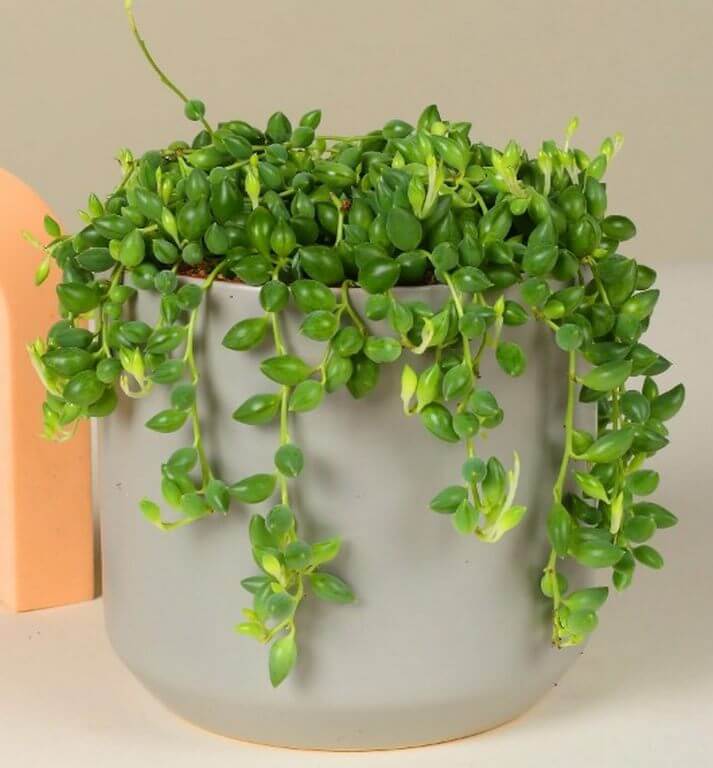
When a growing string of tears indoors, you need to provide adequate light and humidity conditions for the plant to thrive. If you live in a dry climate or have low light levels in your home. Consider using a humidifier or misting the plant regularly to keep it happy and healthy.
Outdoor String of Tears Care Tips
The outdoor string of tears care is slightly different than indoor care because these plants prefer full sun and temperatures above 55 degrees Fahrenheit (12 degrees Celsius).
When a growing string of tears outdoors, you should keep them watered regularly throughout the growing season. So they stay healthy and lush with beautiful foliage. You can also use a Senecio Herreianus as an indoor plant in your home or office, but it’s essential to provide adequate light and humidity conditions for the plant to grow healthy and thrive.
Watering Requirements
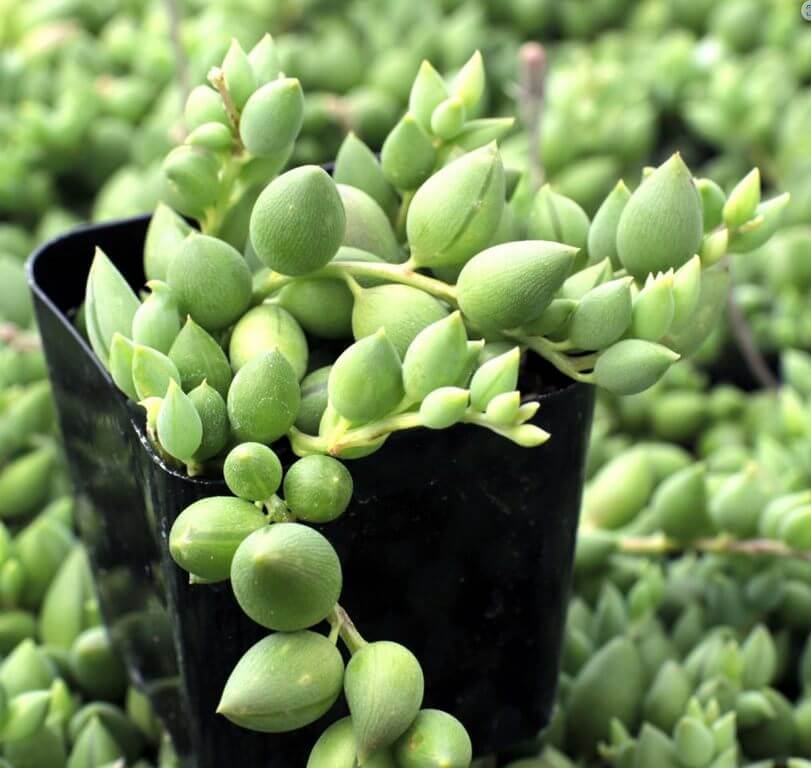
Generally, water regularly during growing but only when the soil has completely dried. Water less during the winter months as this is when they go dormant and don’t need much water at all.
It also helps if you can let the top layer of soil dry out before watering again.
Because this will help prevent root rot from developing in your plant. This can cause severe damage to your plant over time if left untreated properly by providing proper care and treatment for most plants. Especially those naturally drought resistant, like String of Tears (Senecio Herreianus) is a great plant to have in your home because it is effortless to care for.
They do not require much watering and can quickly be grown indoors or outdoors in the shade or full sun as long as there is adequate drainage and soil moisture for them to thrive. They are a great plant to grow as long as you know how to care for them properly.
If you have never had a String of Tears before and want one, make sure that you research how to care for them before purchasing one, because they are not hardy enough to survive outside in most climates unless you live in an area where temperatures do not drop below 60 degrees F.
Soil Requirement Pearls Plant
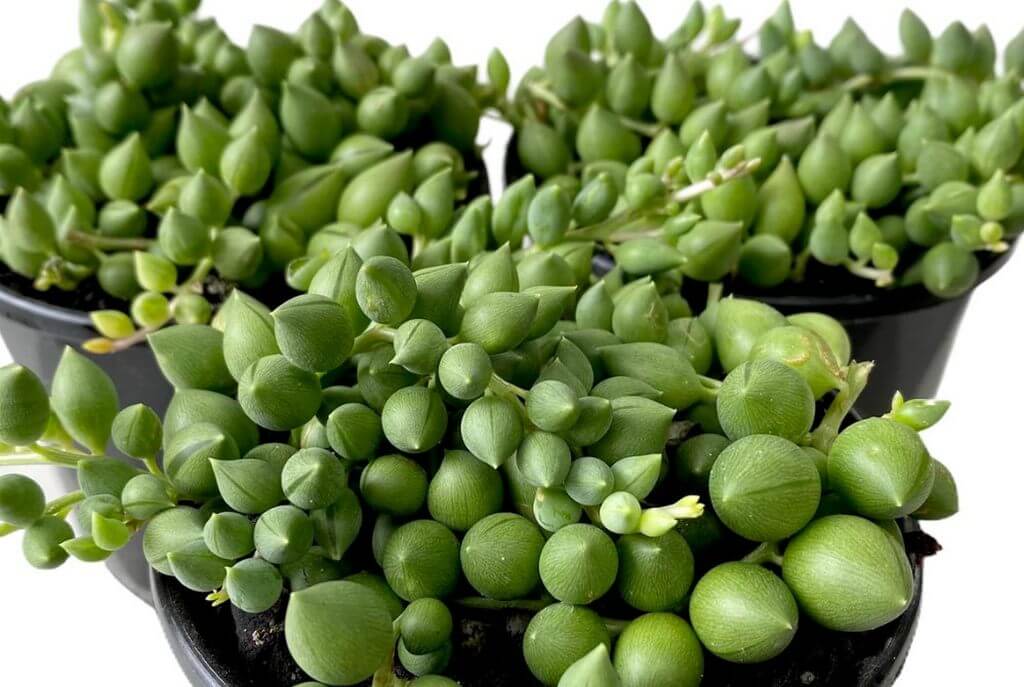
The string of tears plant grows best in moist but well-drained soil high in organic matter. It prefers slightly acidic soil (pH 5 to 6). The plant can be grown in a pot or outdoors in the ground in U.S. Department of Agriculture plant hardiness zones 9 through 11. The cactus succulent soil should have an ideal acidic soil range (PH) level of 5.5 to 7.0, which can be achieved by adding lime or sulfur before planting the seedlings. If you don’t have any cactus succulent soil mix ready in your home, you can buy it from a local nursery shop.
Fertilizer of string of tears plant.
Fertilizer will help keep your string of tears healthy and strong. By providing nutrients for them to absorb through their roots into their leaves and stems so they can continue growing strong.
Fertilize string of tears plant once every two weeks during growing seasons (spring through fall) with water-soluble fertilizer mixed according to label directions. You also can use balanced liquid houseplant fertilizer. Stop fertilizing in winter when plants are dormant; resume fertilizing in spring when new growth appears.
The string of tears plants are not picky about fertilizer and grow well with no added nutrients or a balanced fertilizer. Fertilizing will help keep the leaves from yellowing and encourage new growth, which can be pruned back to promote more branching if desired.
Pruning Tips for String of Tears
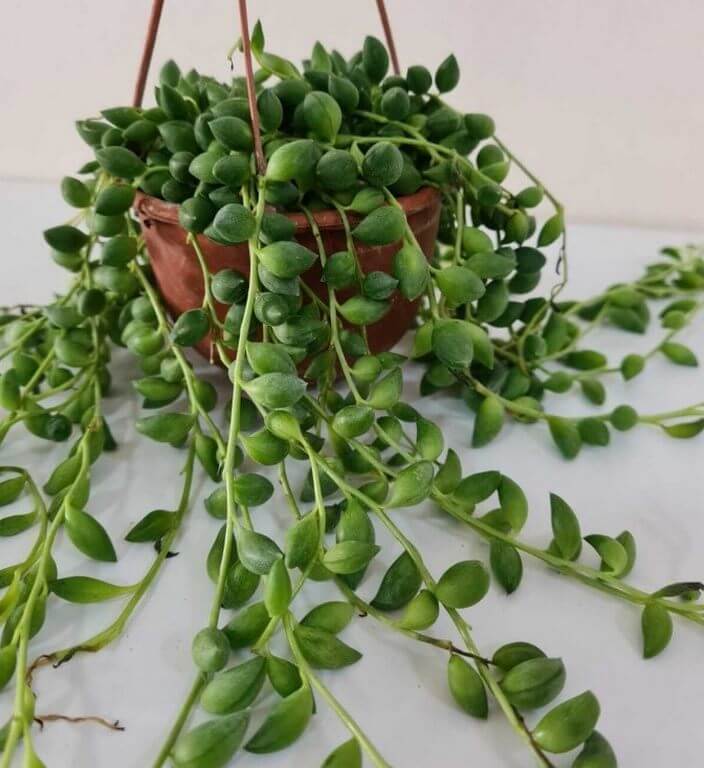
The string of Tears is a fast-growing evergreen shrub with glossy, leathery leaves and clusters of tiny white flowers. It will grow to 3 feet tall and 2 feet wide in the right conditions. You can prune this plant at any time of the year, but it’s usually best to wait until after it blooms in spring or summer.
When to Prune String of Tears
The string of Tears has to prune during its dormant period when it’s not actively growing. This means you should avoid pruning it during its active growth period in spring and summer. If you don’t know when your shrub bloomed last year, look for signs like new growth or new flower buds on the stems.
The string of Tears can be trimmed anytime from fall through spring without affecting its health or vigor. Whether you want to shape or remove deadwood from the trunk or branches is the best time to trim your plant.
How to Prune String of Tears
Prune String of Tears by cutting off dead stems close to the base with a sharp pair of pruners (also called secateurs). Use these same tools to cut back any overgrown branches blocking other parts of your shrub or garden. When pruning String of Tears, cutting just above a node along the stem is vital. These are little bumps on the branches that indicate where new leaves and flowers will grow. If you cut below a node, your shrub won’t be able to produce new growth (and possibly die).
When pruning string of tears, you should use sharp pruners or scissors so that you don’t damage the stems. Prune back stems at any point during the growing season; however, spring is best because it allows new growth time to mature before winter arrives. You can also trim off dead leaves or flowers throughout the year.
Humidity and airflow
The string of Tears is a succulent plant with specific humidity and airflow requirements. It is also a tree-like plant that requires large amounts of light to thrive, so it’s best to place it near a window (or use grow lights) during the day.
The string of Tears should be watered thoroughly when the soil feels dry, but avoid getting water directly on the leaves as this can cause them to rot.
Humidity levels should be kept around 50% at all times if possible. As this will help prevent leaf scorch from lack of moisture on hot days when you aren’t able to water regularly. If you have problems keeping humidity high enough for your plant. It needs a humidity level between 40 and 50 percent, so mist it daily with water. The plant also requires good air circulation, so place it near an open window or on a ledge that receives plenty of sunlight.
Potting mix and repotting String of Tears
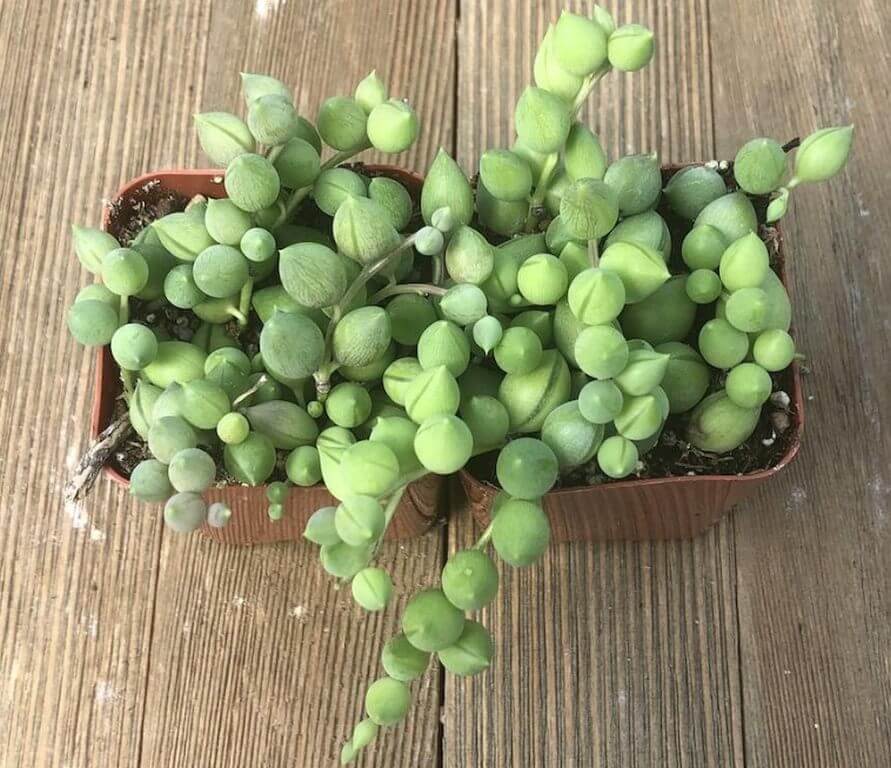
When repotting String of Tears, place it in a bowl of warm water for about 30 minutes to ensure it’s not root bound. Then gently remove the plant from its current container by removing any dead roots and pulling them away from the main plant body (this will encourage new growth). After that, place String of Tears into its new potting mix and make sure its roots are covered with soil, so they don’t dry out.
Propagation String of Tears
Division, cuttings, and seeds can propagate the string of Tears Senecio Herreianus. The best time to do this is in the spring or summer. The easiest way to propagate String of Tears Senecio Herreianus is by division. The division is done by digging up the plant and separating it into smaller pieces with a sharp knife or shovel. The smaller parts have to be replanted immediately.
Cuttings Pearls Plant
Propagation from Cuttings can also be used to propagate String of Tears Senecio Herreianus. Cuttings are taken from the tip of a stem with at least two sets of leaves on it. The cuttings should then be placed into the sandy soil and kept moist until they root.
Seeds Pearls Plant
Propagation from Seeds are also an option for propagating String of Tears Senecio Herreianus. When you want more control over which plants you get and when they will germinate. Seeds should be planted indoors in pots or trays filled with soil that has been sterilized by baking it at 200 degrees Fahrenheit for 30 minutes, then allowing it to cool before planting your seeds on top of it in shallow holes about ½” deep (no deeper than 1/8″).
To germinate the seeds, place them in a seed tray and keep them moist until they have sprouted. Seeds should germinate within ten days. If you use a potting mix for your seed tray, ensure it has been sterilized before planting your seeds. This can be done by heating a large amount of water until it boils and then letting the water cool down to room temperature before pouring it into your seed trays or pots with your potting mix.
Once you have germinated your Senecio Herreianus seeds. You will need to transplant them into larger containers before they become too large for their current container size. You can use any container with drainage holes as long as it is large enough for growing plants.
Common String of Pearls Plant issues, pests, and diseases
The string of tears is susceptible to many pests and diseases, including aphids, spider mites, thrips, and whiteflies. These pests can be found in the plant or its immediate environment. If you are having trouble with any of these pests or diseases on your string of tears plants. Here are some tips for getting rid of them:
Aphids can be treated with insecticidal soap or neem oil spray. Spray both sides of the leaves to kill off any eggs that may have been laid there.
Spider mites are usually only found on indoor plants. This pests can also be found outdoors in hot summer if conditions are right for them. Spider mites typically cause yellow spots on leaves which will eventually turn brown. With damage from feeding by these tiny arachnids, which feed on sap from within plant stems.
They were driving stunted growth due to a lack of nutrients reaching their roots through damaged tissue and reducing overall vigor due to loss of chlorophyll production by the plant. Spider mites are tiny and hard to see with the naked eye. But they leave small webs on the underside of leaves where they often congregate and leave behind yellow spots that turn brown when damaged by feeding.
They can be easily seen under a microscope or magnifying glass.
The string of tears is a great houseplant to have.
The String of Tears (Senecio Herreianus) is a toxic plant that can cause severe allergic reactions.
It’s toxic because it contains saponins, chemicals that can irritate the skin and mucous membranes. When you touch this plant, you may feel itchiness or a burning sensation on your skin and become sneezy or watery-eyed. This reaction may be more severe if you have dust mites or pollen allergies.
If you come into contact with this plant, wash your hands thoroughly with soap and water immediately. If you’re experiencing symptoms like itching or swelling of the eyes or lips, consult your doctor immediately!
Conclusion of Pearls Plant Senecio Herreianus
The String of Tears plants are one of the most interesting Senecio, in my opinion; they remind me of some alien species or something like that. It is a poisonous plant with toxic substances such as saponins and sesquiterpene lactones. So it must be handled with great care.